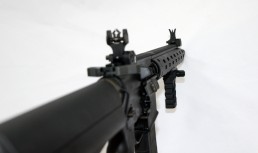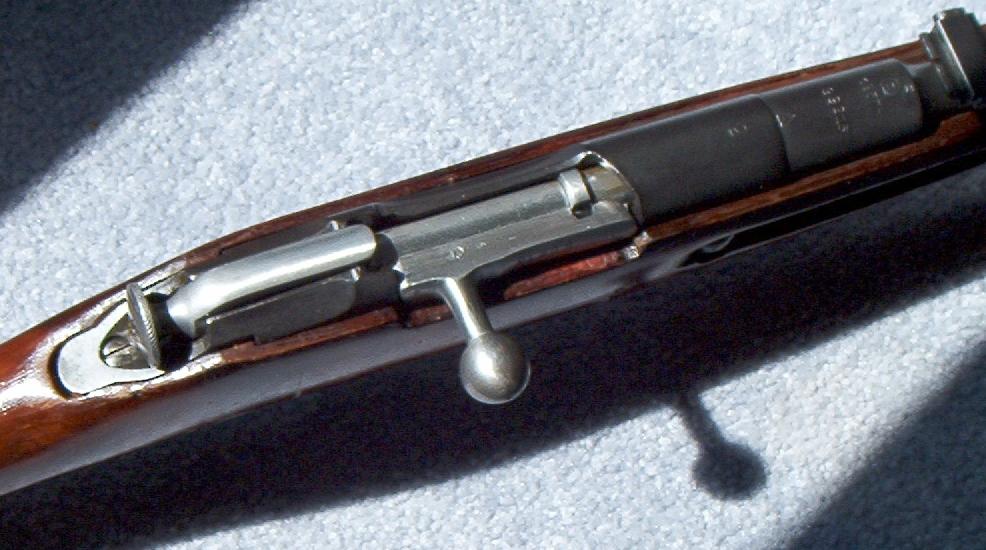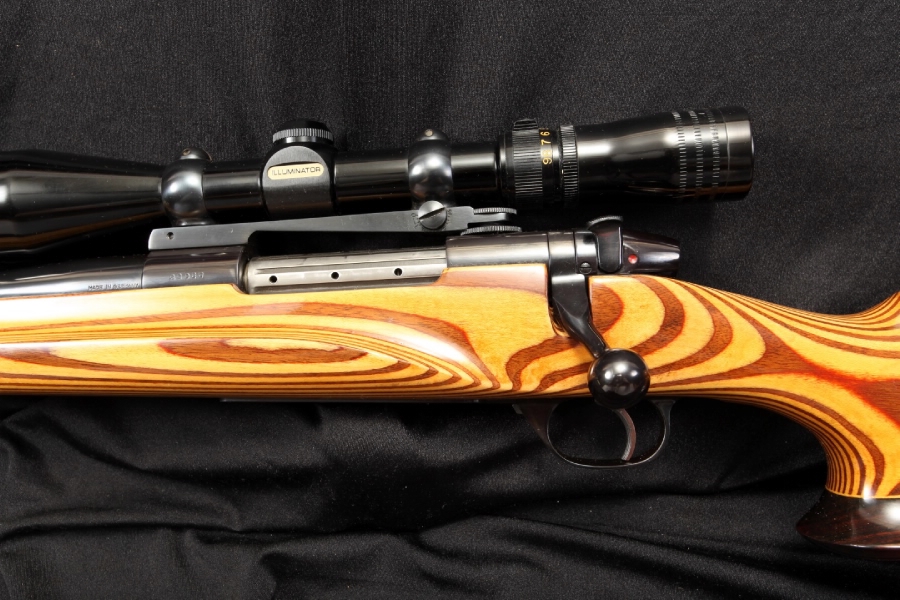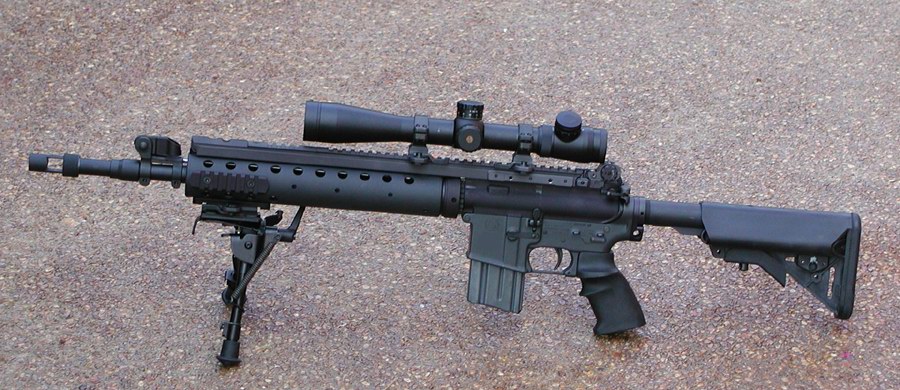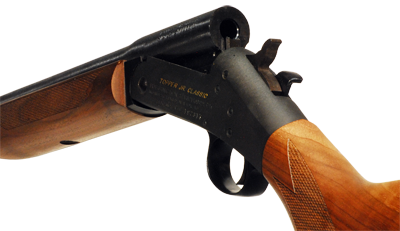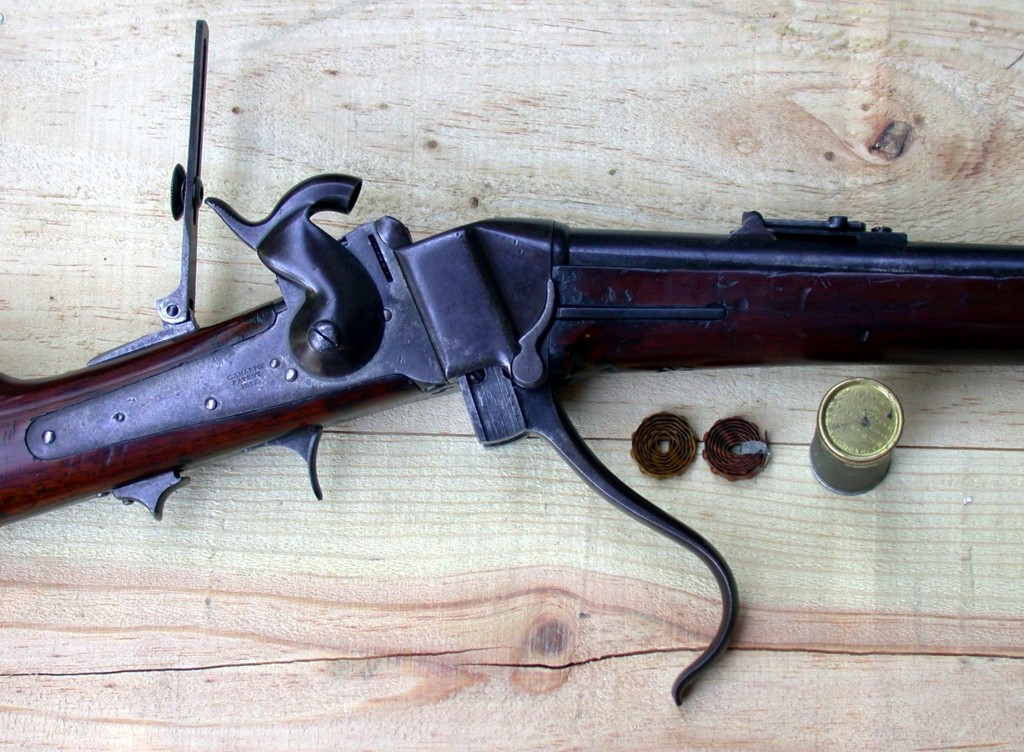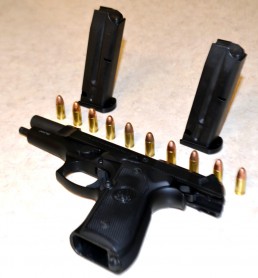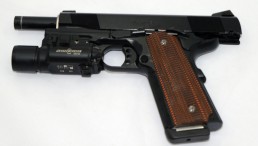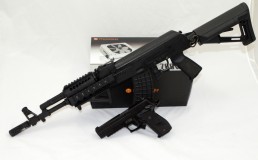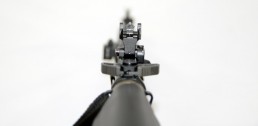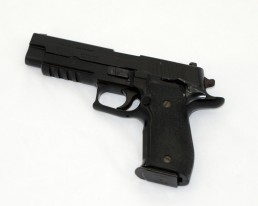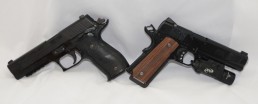ZAUF
ZAUF: Types of Rifles
Earlier in this series, we established the separation of firearms into three very broad categories: rifle, shotgun, and handgun. Each firearm category has its own purpose and role to play in the spectrum of usage. Let’s continue by taking a more granular look at the different types of rifles.
The rifle category is defined by the lands and grooves carved down the interior length of the barrel, as well as the fact that the weapon is meant to be fired from the shoulder. These lands and grooves, called “rifling”, serve to impart a spin upon the projectile as they leave the weapon, making it more accurate at distance with the proper projectiles.
In the broadest sense, the category of rifle is broken down by specific types of actions: e.g. bolt action, lever action, pump action, semi-automatic, and various types of single shot. In the current civilian market, the most popular rifles are generally within either the bolt action or semi-automatic category. Further expanded, rifles are also split up by their purpose, with common categories including hunting, sniping, assault, battle, and other terms entrenched in common parlance. These terms will be further explored in a future ZAUF article.
Bolt action rifles are defined by their action; a manually operated bolt that is opened and closed to cycle a cartridge in and out of the chamber. Bolt action rifles may be loaded with an internal or external magazine, and may come in the form of single shot rifle with no form of additional feeding. Variations of the bolt action operation usually come in the type of handle the bolt uses: left, right, or straight pull. Because of the particular way bolt action rifles operate, along with the greater overall strength of the mechanism, this type of rifle is able to reliably handle much larger and more powerful cartridges than other types of action.
Lever action rifles are defined by the lever, usually wrapped around the trigger guard and grip of the firearm, which is used to cycle the action. This style of action is not as strong as its bolt action counterparts and suffers, generally, from an in-line magazine which runs underneath the barrel. The particular quirk of this type of firearm means that most lever action rifles, unless fed by a box magazine, will only be available in calibers with flat-nosed or round nosed bullet loads in much lower overall strengths. This is because sharper nosed bullets line up in a tube have the unfortunate possibility of accidentally setting off the primer from an adjacent round.
Pump action rifles use a pump to cycle the cartridge through the rifle in the same manner as a pump action shotgun. This type of action generally uses the same under-barrel linear magazine as their lever action brethren, though there are models which utilize a detachable box magazine. This type of action tends to be rarer in the rifle category than it is in the very common pump action shotgun category.
Semi-automatic rifles are defined by their action self-loading the next available round through various means of recycling the energy created by firing a round, as well as by the fact that they fire only a single round every time the trigger is pulled. This is the key that differentiates a semi-automatic rifle from a fully-automatic rifle, as the latter is capable of sustained fire from an ammunition source with only one pull of the trigger. This category of rifle covers a very broad range of firearms available historically, as well as in contemporary production. Earlier historical examples tend to be fed via stripper clip into a fixed internal magazine, while modern production semi-automatic rifles generally opt for a removable box magazine for feeding.
Finally, more niche single shot rifles come in a variety of actions such as break action, falling block, and various types of muzzle loaded rifles. Break action rifles are generally single or dual-shot firearms that are loaded by breaking open the action at the breech (toward the stock) end. Cartridges in break action rifles are loaded and removed by hand with some amount of spring assistance. A falling block action is generally actuated by a lever underneath the action (usually wrapping around the trigger guard), but requires manual action to extract and load any following rounds. Finally, muzzle loaded rifles hearken back to the days of the musket wherein powder, wad, and shot are loaded from the muzzle (business end) of the rifle and jammed back into the breech. Modern black powder muzzle loaders continue to remain popular for hunting.
This provides general overview of the types of rifles in some broad subcategories separated by their action types. There are many more distinctions that are available amongst rifles that will be covered later on.
ZAUF: The Big Three
Since we’ve covered the basic types of bullets, the next logical step would be to discuss the ‘Big Three’ of handgun cartridges.
The ‘Big Three’, as they’re colloquially known, are 9mm Luger (9×19mm Parabellum), .40 S&W (Smith & Wesson), and .45 ACP. Since this is part of our ZAUF series, we won’t go too in depth on each one, but rather cover the basics of each of them.
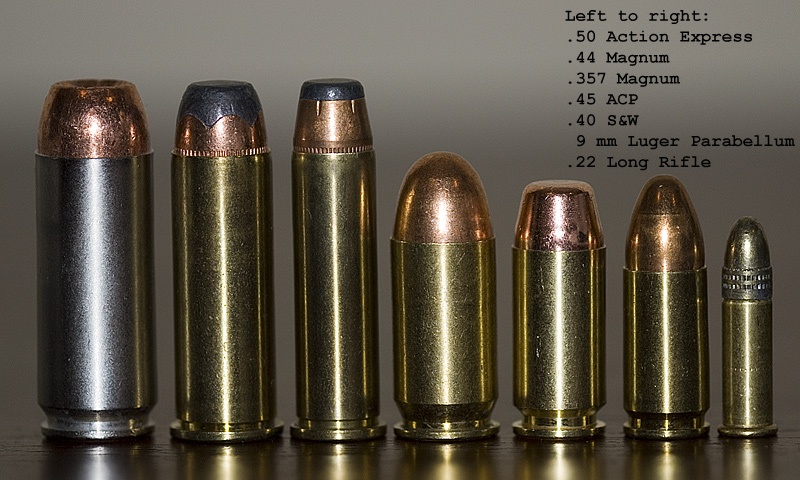
9mm
9mm Luger is the most popular and widespread of the three. It is the smallest round and the most common bullet masses for 9mm are 115 gr, 124 gr, and 147 gr. The ‘gr’ refers to ‘grain’ (so ‘124 gr’ would be spoken as “one twenty-four grain”), and is a unit of mass. 1 gram is the equivalent of approximately 14.5 grains.
9mm is also the cheapest of the three, currently priced around $0.21 per round for 124 gr FMJ.
Another benefit of 9mm is that due to being the smallest of the three, more rounds of 9mm can fit in a magazine of an approximately equivalent size compared to .40 S&W or .45 ACP. The examples we’ll use are the Glock 17 (9mm), Glock 22 (.40 S&W), and Glock 21 (.45 ACP), since they’re all almost the exact same size. The Glock 17 has a standard capacity of 17 rounds, compared to the Glock 22 and Glock 21, which have 15 and 13 rounds respectively.
From our subjective point of view, the recoil of 9mm feels light but snappy, and tends to cause the muzzle to flip up slightly. It’s easy to shoot out of a typical full sized or compact pistol, but gets a bit harder to handle out of sub-compact pistols.
.40 S&W
.40 S&W rides the line between 9mm and .45 ACP. .40 S&W was based off of the 10mm Auto round, but was made shorter and uses less powder in order to reduce the felt recoil when firing.
.40 S&W typically uses bullet masses of 155 gr, 165 gr, and 180 gr.
.40 S&W costs more than 9mm but tends to be cheaper than .45 ACP. It is currently priced around $0.25 per round for 180 gr FMJ.
As mentioned above, the Glock 22 fits 15 rounds of .40 S&W, compared to the equivalently sized Glock 17 (17 rounds) and Glock 21 (13 rounds).
Using our subjective view of recoil again, .40 S&W has the recoil characteristics of 9mm in that it’s snappy and causes muzzle rise, but it feels as though it has the heavier recoil impulse of .45 ACP. This makes it our least favorite of the ‘Big Three’. While it walks the middle on price and size, it feels as though it takes the worst of both worlds (of 9mm and .45 ACP) when it comes to recoil.
.45 ACP
Finally, the venerable .45 ACP was developed by John Browning in 1904, and is most closely associated with M1911 pistol. Most .45 ACP uses bullet masses of 180 gr, 200 gr, and 230 gr.
.45 ACP is the most expensive of the three cartridges, currently selling for approximately $0.32 per round for 230 gr FMJ.
One of the main complaints of .45 ACP is that due to its girth, less rounds can be fit in a magazine. As in our example of the Glock 17, 22, and 21, the Glock 21 chambered in .45 ACP holds only 13 rounds, as opposed to the Glock 17 and 22, which hold 17 and 15 rounds respectively.
Going back to our subjective recoil analysis, .45 ACP clearly has the highest recoil impulse. However, the recoil characteristics make it feel as if the gun is pushing back towards the shooter rather than flipping the muzzle up. This makes the recoil easy to control which allows for rapid reacquisition of the target. Despite the heavy recoil impulse, the characteristics of the recoil actually make it one of our favorite calibers to shoot.
ZAUF: Introduction to Bullet Types
Let’s get back to bullets. There are many different kinds of bullets available on the market today as well as a wide variety of cartridges which utilize these bullets. The anatomy of a cartridge, which we glossed over earlier, consists of 4 major components: the casing, the bullet, the gunpowder, and the primer.
Bullets come in a wide variety of shapes and sizes, even within the families of specific calibers. For our introduction, I’m going to split it into 3 very general categories: Full metal jacket, hollow point, and other - since that’ll be what you see the most in stores.
Full Metal Jacket (FMJ), as the name implies, means that the bullet (normally cast from lead [Pb]) is coated in a jacket (most commonly copper [Cu]) that leaves the base of the bullet exposed. For the most part FMJ bullets are the most common bullet types you’ll encounter on the market.
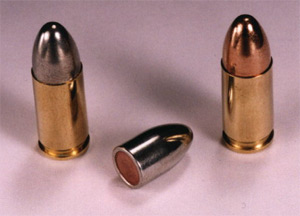
Jacketed Hollow Point (JHP) bullets are true to their name, with a hollow cavity in the nose of the bullet that exposes the lead core and allows the projectile to expand on impact, increasing the terminal damage of the projectile through soft targets. The downside of this is that against even lightly armored targets, the expansion reduces the overall effectiveness of this ammunition type.
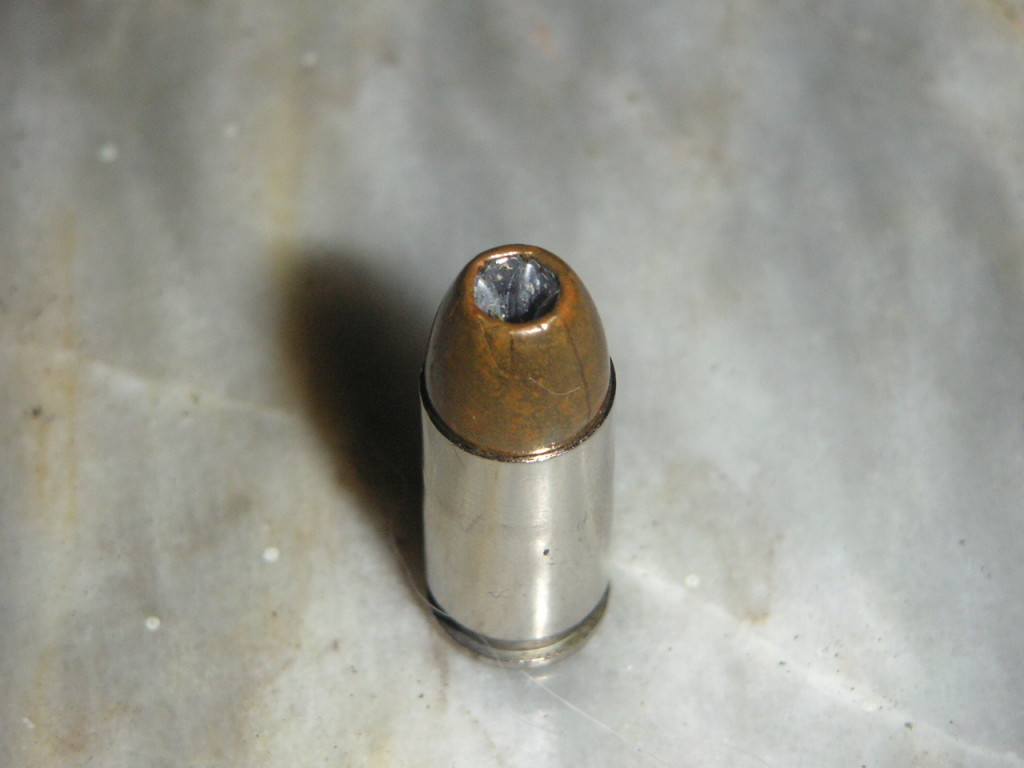
The ‘Other’ category of ammunition covers everything from non-jacketed ammunition to extremely specialized ammunition such as Glaser Safety Slugs and snake shot (also known as rat shot). Almost all non-jacketed ammunition will lack the copper jacket the previous two categories sport and can come in a variety of shapes and purposes. For consumer purposes, these different types of specialized ammunition will become viable with experience and actual use cases.
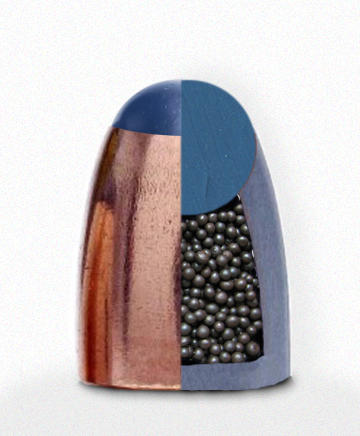
For the examples listed above, non-jacketed reloaded ammunition can be found as an alternative to regular; Glaser Safety Slugs are a special type of bullet with a core made up of loose No. 12 birdshot capped with a polymer tip to prevent over penetration; finally snake shot (or rat shot) is fairly self-explanatory, with different caliber loads meant to be viable against snakes and vermin.
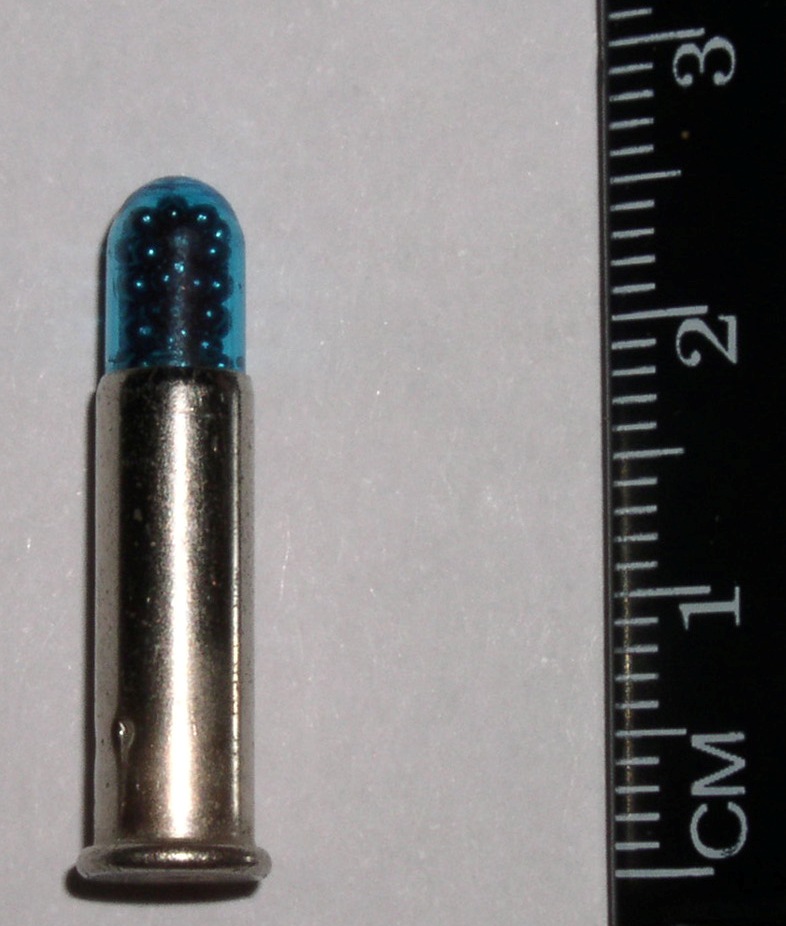
ZAUF: Types of Firearms
Now that there’s enough information to know how to read and have a basic understanding of caliber, let us move on to the firearms themselves. On the whole, firearms are split between handguns and long guns. The names themselves are fairly self-explanatory; handguns are designed to be fired in one or both hands and are generally much smaller and shorter than long arms. On the other hand, long arms are designed to be held in both hands and braced against the shoulder when fired.
Now for something slightly more technical - handguns are subdivided into two different categories: pistols and revolvers. The term ‘pistol’ implies that the chamber is integral with the barrel, meaning the term covers most modern semiautomatic handguns. Revolvers in contrast have a revolving cylinder (hence the name) which contains multiple chambers and at least one barrel for firing them. While there are other odd firearms that have been made throughout history such as revolvers with multiple barrels and multiple cylinders, they are almost completely irrelevant in a modern discussion.
The major split of long guns in the parlance of small arms (because this series won’t be talking about artillery) is between rifles and shotguns. Rifles are defined by as well as named after their rifling: lands and grooves on the inside of the barrel which impart a spin onto the bullet as it travels through. This spin (much like on an American football) gives the bullet increased stability in flight, granting an increased effective range.
Shotguns are defined by two things: the ability to fire shot shells and their smooth bore. Unlike rifles, the bore of a shotgun is generally unrifled. This is because the behavior of shot shells is unlike that of other single bullet cartridges, and rifling would have no effect on these projectiles. Shotguns have what is called a choke (either fixed into the end of the barrel or swappable) that controls the spread of the pellets as they leave the barrel.
As always, there are exceptions and combinations to these general definitions. For example, some shotguns have a revolving mechanism to hold shot shells and are technically a revolver shotgun. There are also smaller subcategories and middling firearms classified in such categories as carbines or submachine guns which are even more refined divisions of the above general categories.
ZAUF: Clips, Magazines, and You
Following the common theme of ammunition, let’s take a look at how they’re loaded into a firearm. In the early days of single shot cannons and later on hand cannons and muskets, the process was excruciating: a shooter would have to load powder in through the muzzle (the business end), tamp it down, shove a wad and bullet in the gun and tamp that down, and then use a separate trigger activated fuse to fire. Thankfully, the invention of the fully encased metal cartridges we know and love has solved all of those problems and made possible for weapons to be magazine fed.
What is a magazine? It is a container where cartridges rest before being cycled into use. A magazine can be internal or removable. An internal magazine is fixed within the firearm itself, and cartridges are added by hand or with the help of a piece of metal called a clip. We’ll talk more about clips later, but the important point is that they are not magazines. Generally, removable magazines come in a few flavors, the most common of these is the box magazine. All that means is that it is boxy and rectangular. Other types of magazines include things such as helical drums that are significantly more common on shotguns and high capacity magazines.
There are generally two types of magazines that are in common use today: Single Stack and Double Stack. What does that mean? Within the body of the magazine the cartridges rest on top of each other in either a straight line or a staggered column. The straight line resting method is called a single stack for obvious reasons, and the staggered column is the double stack. The latter method allows more cartridges to fit into a magazine because of the staggered design.
ZAUF: Introduction to Caliber
The next part of our Zen and the Art of Understanding Firearms (ZAUF) series is still part of the introduction. This entry in the series will teach you what it means when people say “.45 Caliber”, “9 millimeter”, or “12 gauge”.
With these designators, it comes down to differences between the region of origin: American vs the rest of the world. When someone says “a 45” or “45 caliber”, what do they mean? 45 of what? 0.45 of an inch, of course. So what does that mean exactly? The width at the widest part of the given bullet is approximately .45 of an inch wide in diameter. We say “approximately” because if you wanted to extend significant figures out to the thousandths place and beyond you’ll quickly realize that the measurements aren’t quite what you’d expect. In the case of .45, some 45 caliber bullets are commonly .451 inches and others are .452. Common calibers that you’ll see referred to this way are .22, .357, .45, .44, and .50. What you may also see are calibers such as .30-06 (pronounced “thirty aught six” in this case), wherein there is a hyphen followed by another number. These hyphenated numbers are completely arbitrary and their meanings range anywhere from total powder charge meant for use with the cartridge or even the year the cartridge was adopted.
In a metric world with international standards, bullets are measured using millimeters, such as 7.62x51mm and 5.56x45mm, or 7.62x39mm. What do these two numbers mean? The first number is the same as the American method of reference, meaning the width of the bullet at the widest point. The second number is the length of the casing.
So what is a gauge? Most commonly you’ll see gauge used in reference to shotshell measurements for shotguns. The real definition of what a gauge is is tangentially related to a similar density measurement of iron ball fitting in cannons that ends up being fairly obscure and technical, so we’ll spare you that aspect of it. What you do need to know and keep in mind is that usually the smaller the number, the bigger the shell, E.g. 10 gauge > 12 gauge > 20 gauge. The notable exception to this is .410 shotshell, which is measured in the American style of caliber mentioned above.
Sometimes there are cartridges that are very similar, or are slightly modified versions of each other that are designed for shooting at different pressures and will have both types of designations. Two common examples of this are .223 Remington and 5.56x45mm as well as .308 Winchester and 7.62x51mm. These two sets of cartridges are almost identical, and depending on the firearm, they will have cross compatibility. However, there are nuances I’m glossing over right now that will be explored later, so keep in mind that while they’re often interchangeable, that’s not always the case.
Zen and the Art of Understanding Firearms
There’s a Zen koan that goes,
“Nan-in, a Japanese master during the Meiji era (1868-1912), received a university professor who came to inquire about Zen.
Nan-in served tea. He poured his visitor's cup full, and then kept on pouring.
The professor watched the overflow until he no longer could restrain himself. ‘It is overfull. No more will go in!’
‘Like this cup,’ Nan-in said, ‘you are full of your own opinions and speculations. How can I show you Zen unless you first empty your cup?’”
That serves as the foundation of any introduction to Zen and Zen Buddhist philosophy. While I won’t be attempting to teach you Zen here, I do recognize the fact that for many people, starting with tabula rasa is the best way to begin any form of education: free of preconceptions and prejudice.
That in mind, let’s begin this partnered meditation on firearms. What I hope to present to you, the reader, is a guide that contains all of the building blocks to understand, operate, and master firearms in general.
So beginning with nothing, the first topic that’d be best to cover is ammunition. What do guns shoot? The correct answer is bullets, but that’s a bit of a misnomer. What you’re most likely to find on sale in stores are technically cartridges. These cartridges are collections that involve a bullet, gunpowder, and a small explosive charge called a primer all wrapped up in a metal casing. These bullets can come in a variety of forms and names, but that’s for a later discussion. Similarly not all gunpowder is created equal. Nor are the primers the same across the multitude of different cartridges. To save time, though, the metal casing only really comes in a handful of different metal types.
The most common of these in modern production is brass. You’ll find brass casings commonly in modern production ammo and it is the de facto standard of modern ammunition. The second most common of these is steel. Steel cases tend to be a sign of Soviet and post-Soviet surplus ammunition, which has its own multitude of quirks that we can discuss later. Other less common and more brand-defined metals are aluminum and a much broader and more vague term called bi-metal which, as the name implies, consists of two different metals. A special note is given to shotgun shells, which are most commonly made with plastics these days, though there are ones made of solid brass.
So what happens to this whole cartridge in the process of actually shooting a gun? Once the trigger is pulled on any given firearm, something strikes the primer, which is a contact explosive. This primer ignites and causes the powder within the metal casing to burn. The burning of the powder creates gas and pressure, which pushes the bullet out of the top of the metal casing and out the barrel.
Simple, isn’t it?

